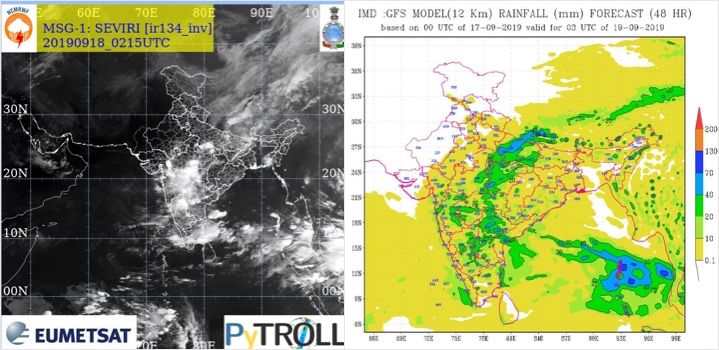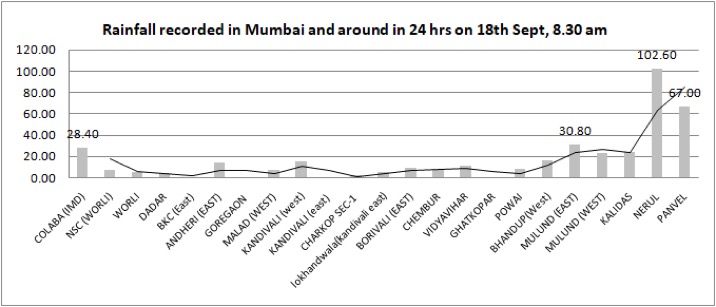Heavy rainfall likely in Mumbai, Thane on Thursday: IMD


The weather department has issued a ‘red alert’ for Mumbai and Thane for Thursday with a forecast of “heavy to very heavy” rain in the city and suburbs
The India Meteorological Department (IMD) has predicted heavy rainfall at isolated places in Mumbai, Thane and Navi Mumbai on Thursday.
According to the department, there will be an increase in rainfall activity in the interiors of Maharashtra between September 18 and 25.
“Rainfall in the last 24 hours till 8 am on Wednesday in Mumbai and nearby areas indicates heavy showers in Navi Mumbai and Thane. Latest satellite image indicates active monsoon conditions over central India and Maharashtra,” the department said.

Rainfall recorded in last 24 hours
The active monsoon conditions are being attributed to the formation of a low-pressure area over west-central Bay of Bengal and adjoining areas of coastal Andhra Pradesh during next 24 hours, and its likely westward movement towards parts of Maharashtra.
In line with the prevailing conditions, the MeT has issued a ‘red alert’ for Mumbai and Thane for Thursday with a forecast of “heavy to very heavy” rain in the city and suburbs.
“Rainfall forecast for September 19-20 from NCUM and IMD GFS model indicates the enhancement if rainfall over coast including Mumbai and interior of Maharashtra. Intense rainfall over Mumbai, Thane, Palghar and Raigad too,” said K S Hosalikar, Deputy Director-General of Meteorology, IMD Mumbai.
Realised rainfall in last 24 hrs at 8 am in mumbai & around, indicate heavy falls in NM & Thane areas. Latest satellite image indicating active monsoon conditions over central India, Mah.
Forecast is RF to continue over interiors and North Konkan next 24 hrs including Mumbai. pic.twitter.com/orCovAZPyT— K S Hosalikar (@Hosalikar_KS) September 18, 2019
Meanwhile, thanks to the long and regular bouts of rainfall this year, Mumbai recorded its wettest monsoon since 1954. The city saw 3,467.6 mm rainfall from June 1 to September 17, surpassing the record of 1954, during which 3,451.6 mm rainfall was recorded.
The city is also just short of surpassing the highest ever September rainfall. It has received 913.7 mm rainfall as of 8:30 am on September 17, just 6.3 mm shy of 920 mm recorded in 1954 and a stark contrast from the average of 327 mm.













